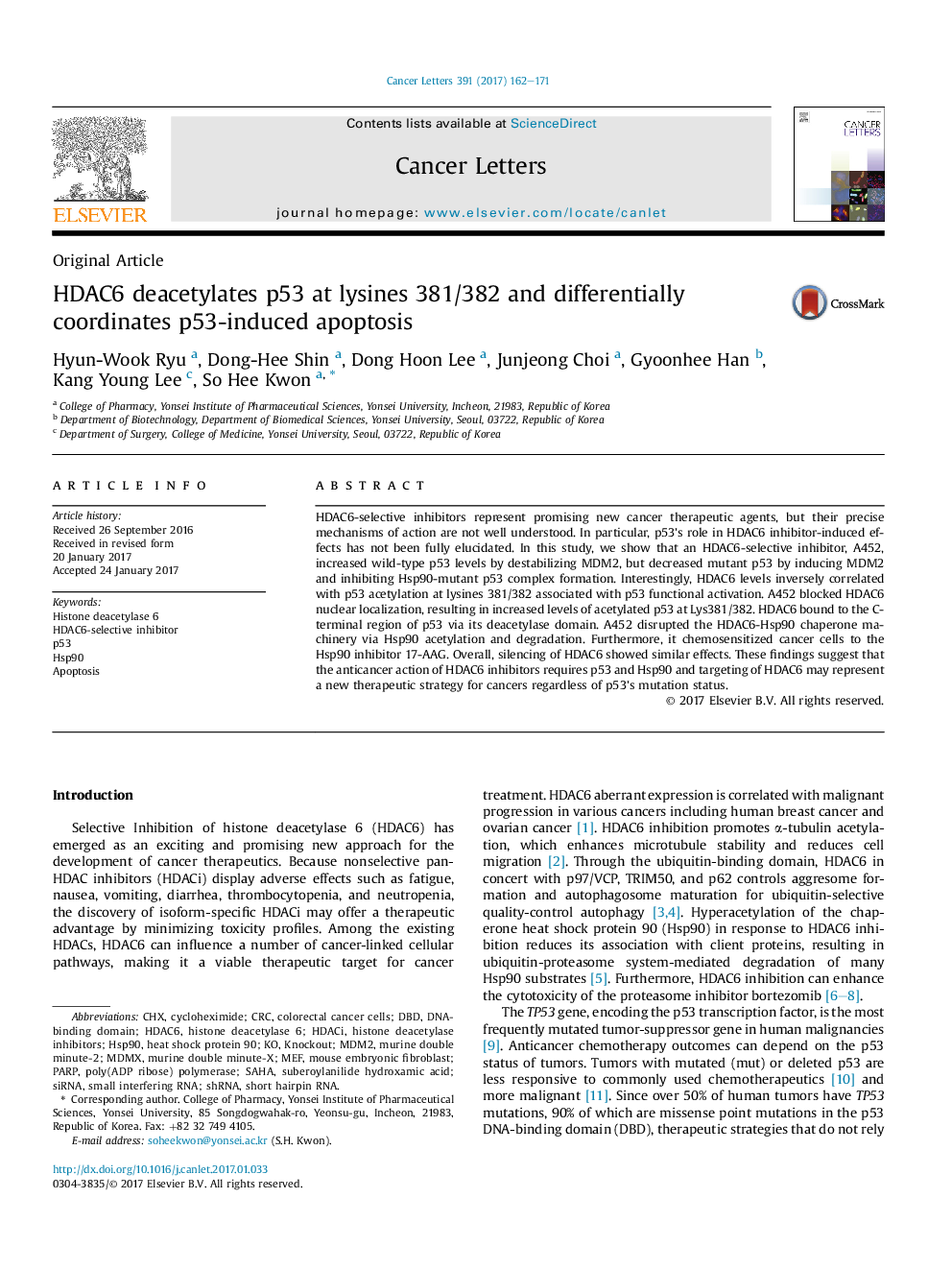| Article ID | Journal | Published Year | Pages | File Type |
|---|---|---|---|---|
| 5525391 | Cancer Letters | 2017 | 10 Pages |
â¢HDAC6 deacetylates p53 at lysine 381/382.â¢A452 increases wild-type p53 levels by destabilizing MDM2.â¢A452 decreases mutant p53 levels by inhibiting Hsp90-mutp53 complex formation.â¢HDAC6 levels inversely correlate with p53 acetylation.â¢A452 disrupts HDAC6-Hsp90 chaperone machinery via Hsp90 acetylation and degradation.
HDAC6-selective inhibitors represent promising new cancer therapeutic agents, but their precise mechanisms of action are not well understood. In particular, p53's role in HDAC6 inhibitor-induced effects has not been fully elucidated. In this study, we show that an HDAC6-selective inhibitor, A452, increased wild-type p53 levels by destabilizing MDM2, but decreased mutant p53 by inducing MDM2 and inhibiting Hsp90-mutant p53 complex formation. Interestingly, HDAC6 levels inversely correlated with p53 acetylation at lysines 381/382 associated with p53 functional activation. A452 blocked HDAC6 nuclear localization, resulting in increased levels of acetylated p53Â at Lys381/382. HDAC6 bound to the C-terminal region of p53 via its deacetylase domain. A452 disrupted the HDAC6-Hsp90 chaperone machinery via Hsp90 acetylation and degradation. Furthermore, it chemosensitized cancer cells to the Hsp90 inhibitor 17-AAG. Overall, silencing of HDAC6 showed similar effects. These findings suggest that the anticancer action of HDAC6 inhibitors requires p53 and Hsp90 and targeting of HDAC6 may represent a new therapeutic strategy for cancers regardless of p53's mutation status.
